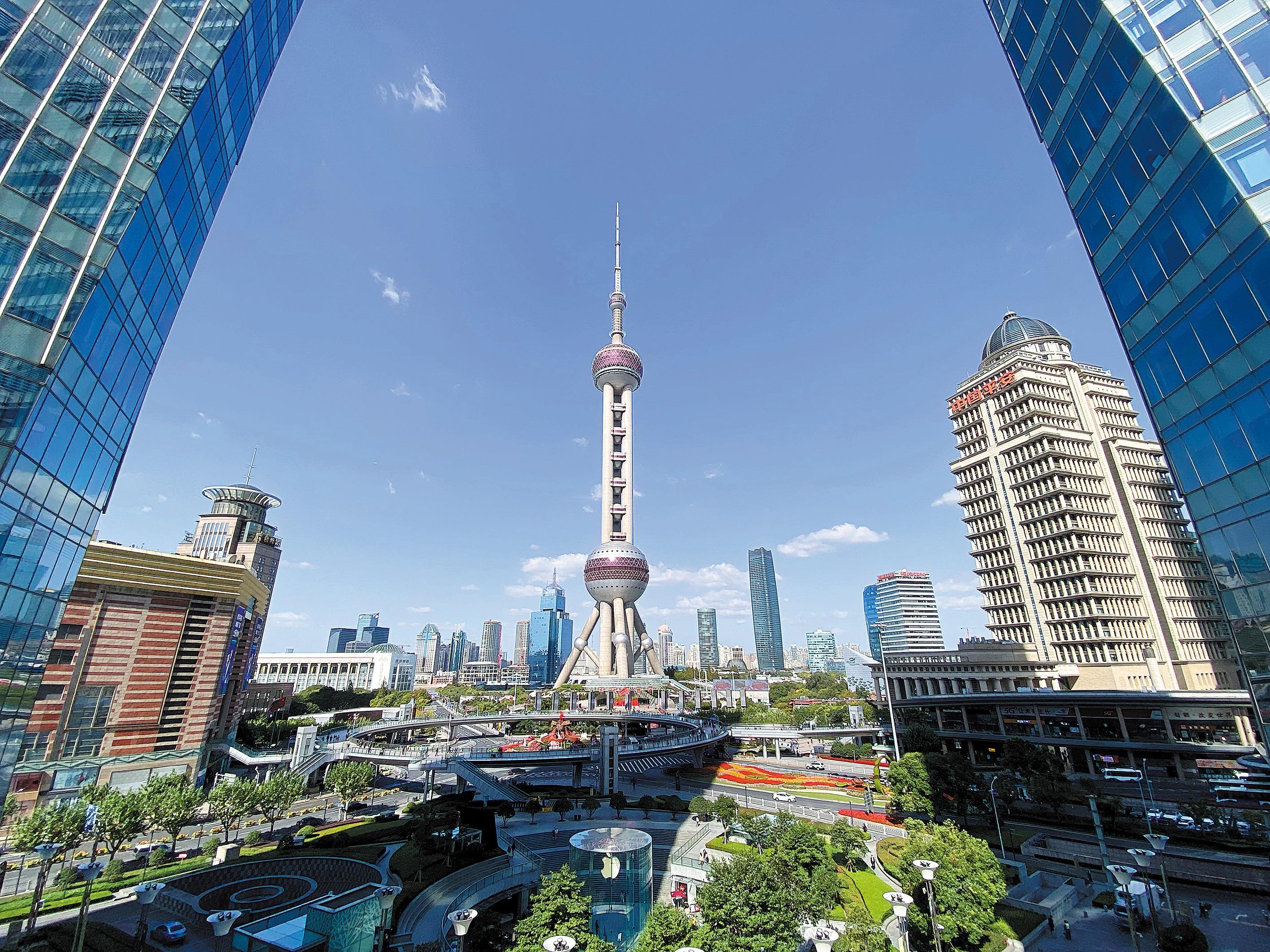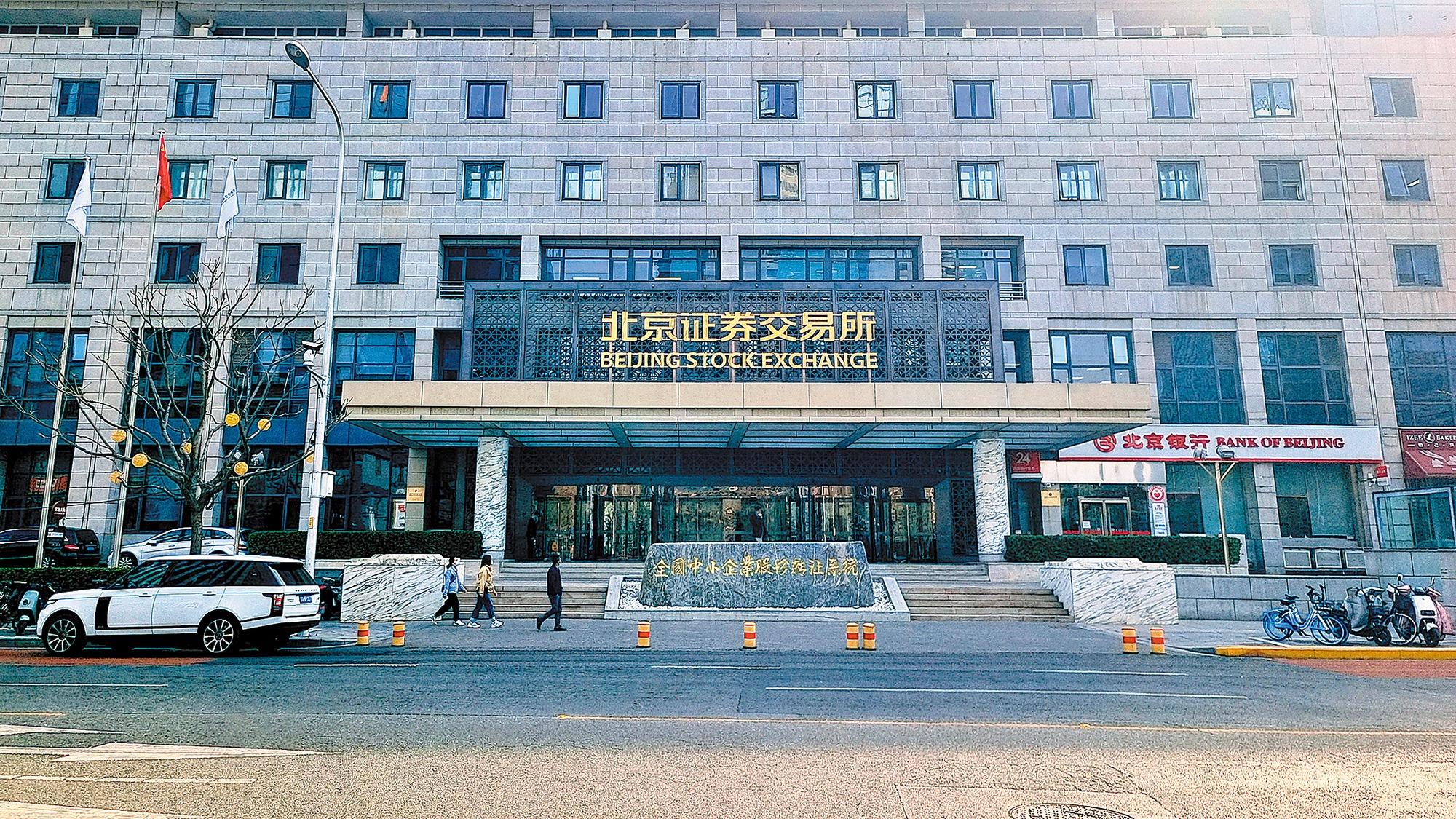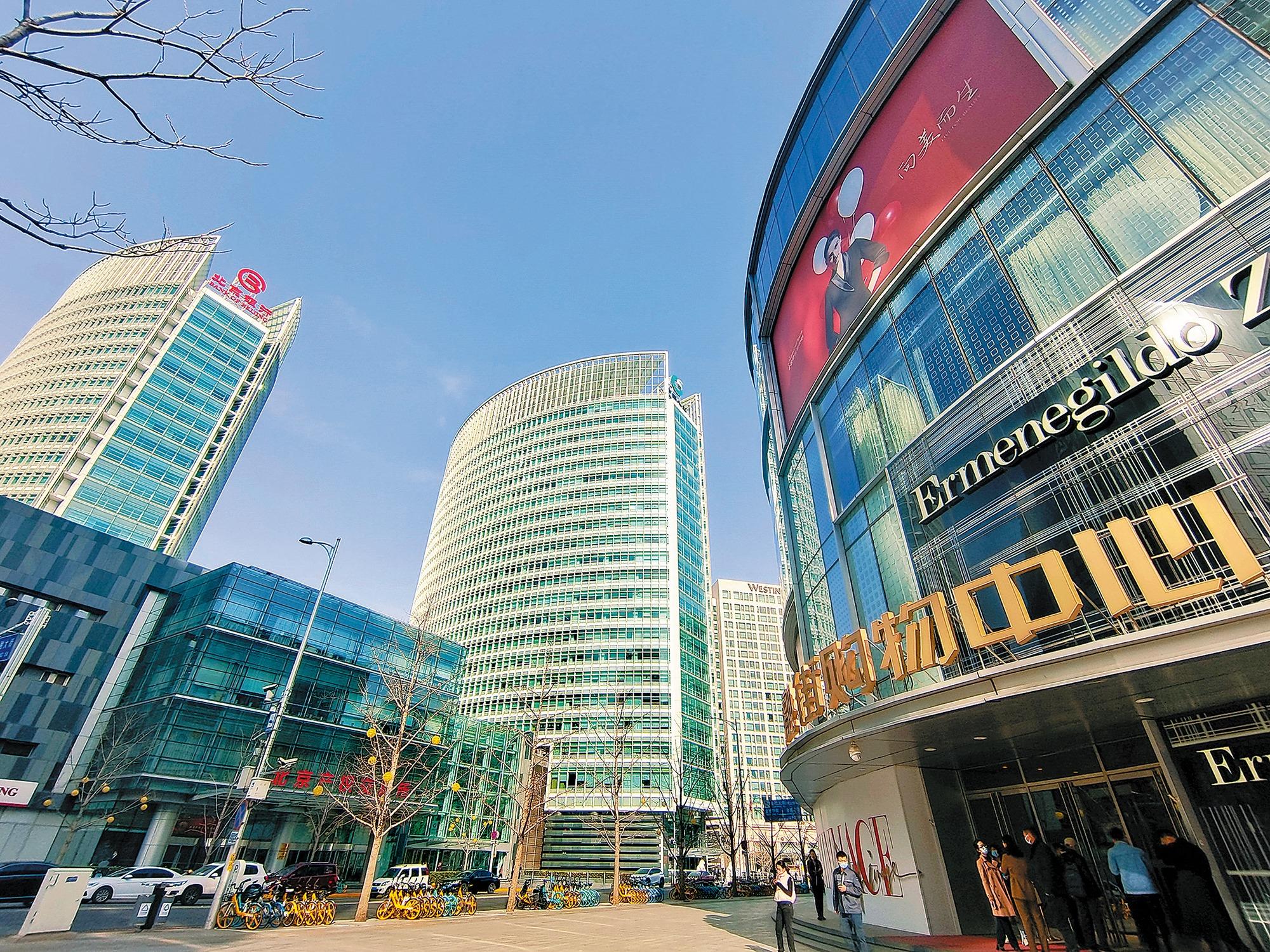Major advances key to improving competitiveness of A-share companies
 The Lujiazui area in Shanghai boasts over 6,000 financial firms. (PHOTO / XINHUA)
The Lujiazui area in Shanghai boasts over 6,000 financial firms. (PHOTO / XINHUA)
Investment in China's A-share market has been challenging in recent months despite the nation's economic recovery.
Indexes have fluctuated significantly and there have also been rapid changes in sectors leading market rallies and downturns.
Such volatility has been noted by regulators. Early last month, Yi Huiman, chairman of the China Securities Regulatory Commission, or CSRC, the country's top securities watchdog, said that to secure market order, a close eye would be kept on insider trading and market manipulation.
Competitive companies will gain more resources from the market. China’s industrial restructuring and upgrading will thus be facilitated, which will serve the nation’s goal of realizing high-quality economic growth.
Gui Haoming, chief market expert at Shenwan Hongyuan Securities
Yi was speaking in Shanghai at the annual Lujiazui Forum, a high-level platform for government officials, global financial leaders and outstanding scholars to discuss and foster international financial cooperation, and further financial reform and market opening in China.
A-shares are those of incorporated companies based on the Chinese mainland that are listed on either the stock exchanges in Shanghai or Shenzhen, Guangdong province, and also in Beijing.
Regulatory supervision aside, the performance of the A-share market is worth a closer look, especially when compared with those of other markets.
The benchmark Shanghai Composite Index has remained basically flat during the past six months. It has fallen by nearly 6 percent from its peak of 3,395 points reached in early May. Meanwhile, the Shenzhen Component Index has shed 9 percent from this year's peak of 12,158 points.
In Hong Kong, the Hang Seng Index has been just as sluggish, falling by some 17 percent from this year's height of 22,688.9 reached in late January.
But during this time, a totally different story has emerged in other major markets around the world, despite soaring inflation, rising interest rates and pressure from economic downturn.
In the United States, the Nasdaq has surged by 30 percent this year. In Japan, the Nikkei 225 has risen by more than 27 percent, repeatedly setting records. In mid-May, the index topped 30,000 points, the highest level since Japan's economic bubble burst in 1989. On Monday, the index stood at more than 33,700 points.
Analysts at Zheshang Securities said the bullish performance in Japan is due to the country's relaxed monetary environment.
Thanks to a low benchmark interest rate, with the 10-year government bond yield set at 0 percent, foreign investors have bought Japanese stocks with financing obtained from local banks. The investors calculate that the yield generated from stock investment will be higher than banks' interest rates. Their bulk purchases of Japanese stocks have pushed up asset prices, resulting in the Nikkei 225 rally, the analysts said.
At China International Capital Corp, or CICC, analysts said better-than-expected fiscal results of leading technology companies have led to the Nasdaq's strong performance in past months.
Effective headcount reductions, combined with the stimulus provided by quickly rising emerging industries such as artificial intelligence, have armed technology giants with more risk resistance. Under the scenario of a mild economic recession in the US, the technology sector, which earlier saw a price adjustment, will face less downward pressure, the analysts said.
 The Beijing Stock Exchange starts its first day of trading on Nov 15, 2021. (LU JINFU / FOR CHINA DAILY)
The Beijing Stock Exchange starts its first day of trading on Nov 15, 2021. (LU JINFU / FOR CHINA DAILY)
Main reason
CICC managing director Li Qiusuo said most analysts believe that the slower-than-expected economic recovery in China was the main reason for the sluggish performance of the A-share market earlier this year. But it is probably also time to take a closer look at the quality of A-share companies, Li added.
Chasing Securities data show the top 10 Nasdaq companies contributed 44.23 percent to the index's growth from 2012 to last year, while in China, the comparable contribution of the 10 largest A-share companies was only 11.36 percent during the same period.
Statistics from market tracker Wind Info show that in terms of sales revenue for specific industries, finance, construction and energy based on fossil fuel continued to dominate the top three positions in the A-share market last year. Despite their rapid growth, emerging industries such as information technology and biomedicine still have a long way to go in annual turnover, thus exerting less influence on this market.
Regulators have stepped up their efforts. In late November, an action plan for 2022-25 aimed at improving the quality of China's public companies was released by the CSRC.The plan is designed to optimize the existing trading mechanism and rules, rectify problems significantly affecting listed companies' corporate governance, optimize the overall listing structure of public companies, and complete the long-term mechanism for cracking down on major violations.
In December, the Shanghai and Shenzhen stock exchanges introduced detailed plans to better carry out the CSRC's action plan.
At this year's Lujiazui Forum, the CSRC's Yi stressed that implementing the action plan will be one of the focuses. Efforts will also be made to improve the quality of public companies' information disclosure and strictly punish violations such as financial fraud. The aim is to improve A-share companies' governance, competitiveness, creativity, risk resilience and returns, he said.
At the Shanghai Stock Exchange, the STAR Market, which was launched four years ago, is positioned to nurture "hard technologies" such as biomedicine and chipmaking in an attempt to improve the quality of the A-share market, which will eventually boost high-quality economic growth with the help of the capital market.
Of the 534 companies listed on the STAR Market as of June 14, when it marked its fourth anniversary, 218 are new-generation information technology companies, 108 are biomedicine companies, while 88 are high-end equipment manufacturers.
Last year, STAR Market companies allocated an average of 16 percent of their annual sales revenue for research and development, while the comparable proportion for all A-share companies was 2.3 percent, Wind Info data show.
The emphasis on research and development has paid off. Wind Info statistics show that the average year-on-year sales revenue growth for STAR Market companies last year was 29.3 percent, compared with 7.2 percent for the A-share market. These technology-focused companies saw their net profit rise by 5.4 percent on average from a year earlier, while the average growth rate for such companies across the A-share market was just 0.8 percent.
Experts from Haitong Securities said the STAR Market is strategically important for China's industrial upgrading and transformation to high-quality economic growth. Innovation-driven companies will be the pillar of the nation's economic development, implying great investment value, the experts added.
The STAR Market's registration-based initial public offering, or IPO, mechanism is of great significance to the A-share market.
Yang Delong, chief economist at First Seafront Fund Management Co in Shenzhen, said that before the introduction of the mechanism, which was officially promoted throughout the A-share market in April, each IPO had to undergo CSRC revision before final approval was obtained. The process was time-consuming, and some companies went public via mergers and acquisitions or through buying so-called shell companies.
Some shell companies, already labeled "specially traded" stocks due to their sluggish performance, did not focus on their prime operations, Yang said. Instead, they hyped their profiles in the hope of attracting potential buyers. They could continue to exist as long as they were bought by companies intending to go public.
 Beijing Financial Street is the city’s first large-scale financial area. (LU JINFU / FOR CHINA DAILY)
Beijing Financial Street is the city’s first large-scale financial area. (LU JINFU / FOR CHINA DAILY)
Shorter process
But under the registration-based IPO mechanism, the listing revision is completed at exchanges. The entire IPO process is significantly shorter, and the resources of shell companies are no longer a factor. As a result, shell companies with poor business performances, higher operating risks and unregulated internal controls will disappear from A-share market, which will improve its quality, he added.
Another major advance is the normalized delisting mechanism, which took effect at the start of 2021.
As of the middle of last month, at least 43 A-share companies had received delisting notices, exceeding the 42 for all of last year and the single-digit figures of earlier years.
Li Zhan, chief economist at China Merchants Fund, said that under the new delisting mechanism, capital market resources are used more efficiently and effectively, as capital once taken up by less competitive companies is now directed to those with true growth potential.
There is also less irrational investment, most of which used to go to less competitive companies, he said. This helps to instill the idea of long-term investment and value investment in the A-share market.
"The delisting mechanism lays the ground for the overall implementation of the registration-based IPO mechanism. These two institutional arrangements are vitally important to improving the quality of A-share companies," Li said.
Zheng Yu, a professional at the International School of Law and Finance at East China University of Political Science and Law, said the registration-based IPO mechanism and the new delisting mechanism are reforms at the entry and exit points of the capital market. Judgments and expectations of price changes in the capital market will change, and it will play a more important role in allocating market resources, he added.
Companies have taken note of the improved environment in the A-share market. Chipmaking giant Huahong Group, which went public in Hong Kong in 2014, saw its listing registration on the STAR Market gain final CSRC approval early last month. Its IPO, aimed at raising 18 billion yuan ($2.5 billion), is expected to be the largest such offering in the A-share market this year.
China Mobile Communications Group, which floated on the Hong Kong bourse in 1997, was listed on the A-share market at the start of last year.
Orient Securities' chief economist Shao Yu said the capital market aims to provide long-term capital to companies in order to support the real economy effectively.
He added that the development of emerging industries, driven by technological advances, has become the engine for high-quality economic growth, which will continue to be the case for many years.
Shao said technologically advanced companies usually require large amounts of preliminary investment, and their investment cycle is longer than that for traditional companies. This equates to higher risks, making it more difficult for technologically advanced businesses to obtain financing from traditional institutions such as banks.
Sharing risks and benefits is a basic feature of the capital market. With its different layers, including venture capital, private equity, primary market and secondary market, Shao said companies in the capital market will acquire financing at different stages of their development to support the market's technological upgrading.
Gui Haoming, chief market expert at Shenwan Hongyuan Securities, said: "We can see that the Chinese capital market has built these different layers. While being different, the STAR Market, ChiNext (also known as the Growth Enterprise Market) and the Beijing Stock Exchange are also connected, enabling market resources to be fully used under such a structure.
"Competitive companies will gain more resources from the market. China's industrial restructuring and upgrading will thus be facilitated, which will serve the nation's goal of realizing high-quality economic growth."


